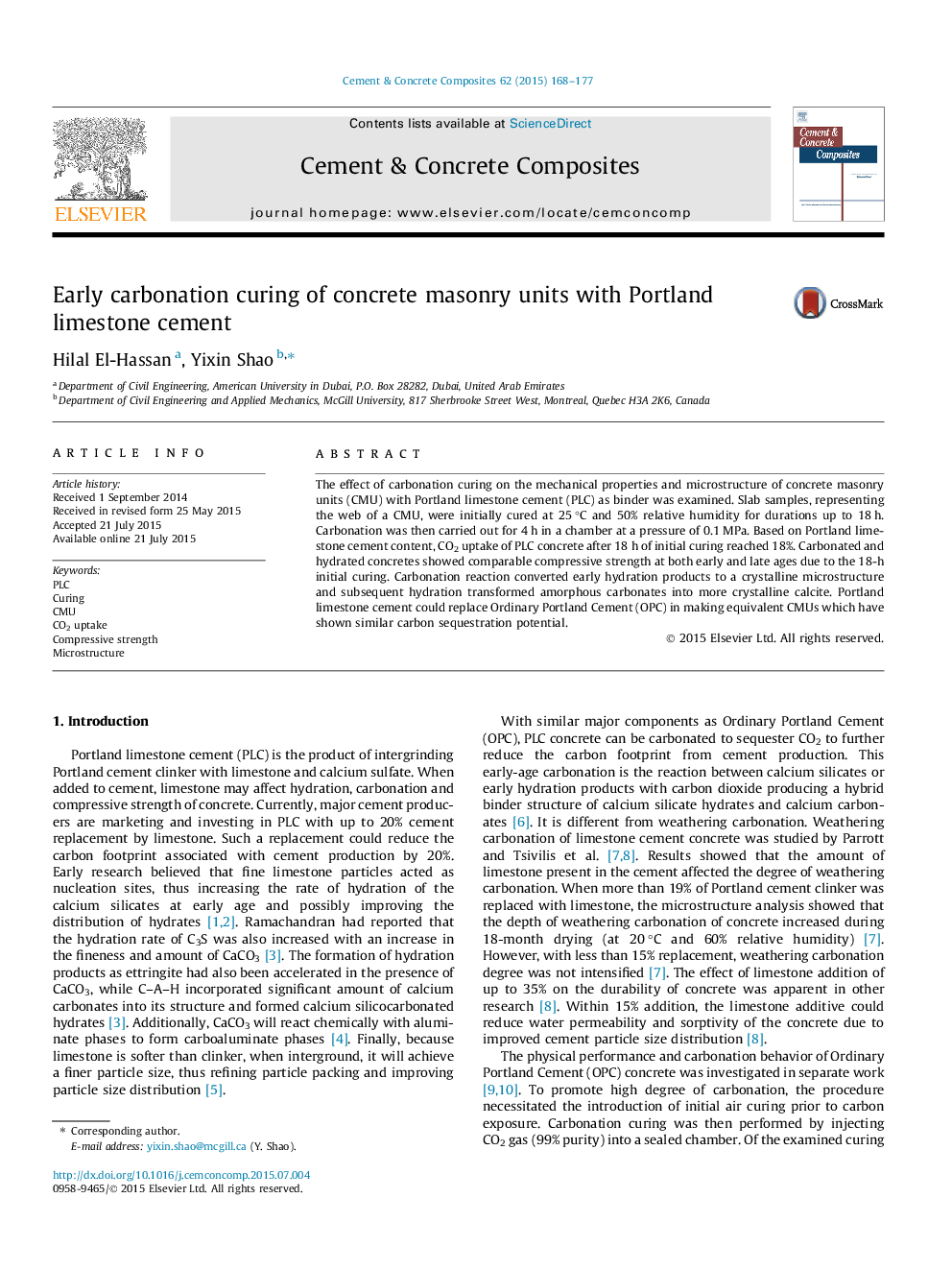| Article ID | Journal | Published Year | Pages | File Type |
|---|---|---|---|---|
| 1454498 | Cement and Concrete Composites | 2015 | 10 Pages |
The effect of carbonation curing on the mechanical properties and microstructure of concrete masonry units (CMU) with Portland limestone cement (PLC) as binder was examined. Slab samples, representing the web of a CMU, were initially cured at 25 °C and 50% relative humidity for durations up to 18 h. Carbonation was then carried out for 4 h in a chamber at a pressure of 0.1 MPa. Based on Portland limestone cement content, CO2 uptake of PLC concrete after 18 h of initial curing reached 18%. Carbonated and hydrated concretes showed comparable compressive strength at both early and late ages due to the 18-h initial curing. Carbonation reaction converted early hydration products to a crystalline microstructure and subsequent hydration transformed amorphous carbonates into more crystalline calcite. Portland limestone cement could replace Ordinary Portland Cement (OPC) in making equivalent CMUs which have shown similar carbon sequestration potential.
